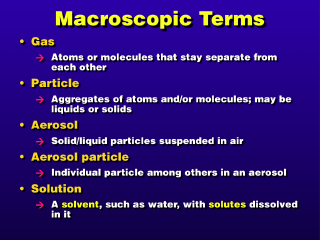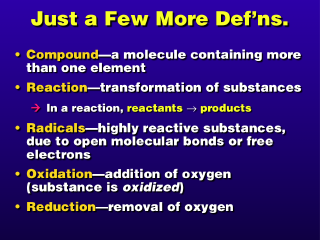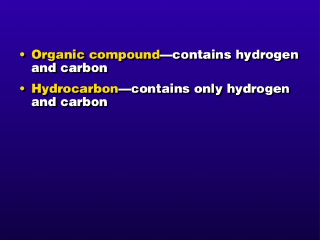


Combustion is a form of oxidation. This reaction gives off heat, so it is called "exothermic".

 |
Aerosol and aerosol particle are sometimes used interchangeably; however, an "aerosol" is really a "cloud" of aerosol particles. |
 |
A molecule can have two or more atoms of the same element, so you would have atomic and molecular forms of that element. For example, there is atomic oxygen (O) and molecular oxygen (O2) . |
 |
Radicals may be formed by a chemical reaction that strips off an atom from a molecule. This molecule will have an unfilled molecular bond due to the lost atom. The radical is highly reactive because that open molecular bond needs to be filled by an atom, so that the molecule can be stable. In photochemical smog, these are usually organic compounds where a hydrogen atom had been stripped off.
Combustion is a form of oxidation. This reaction gives off heat, so it is called "exothermic". |
 |
Organic compounds can have elements other than carbon and hydrogen, but hydrocarbons can have only carbon and hydrogen. |